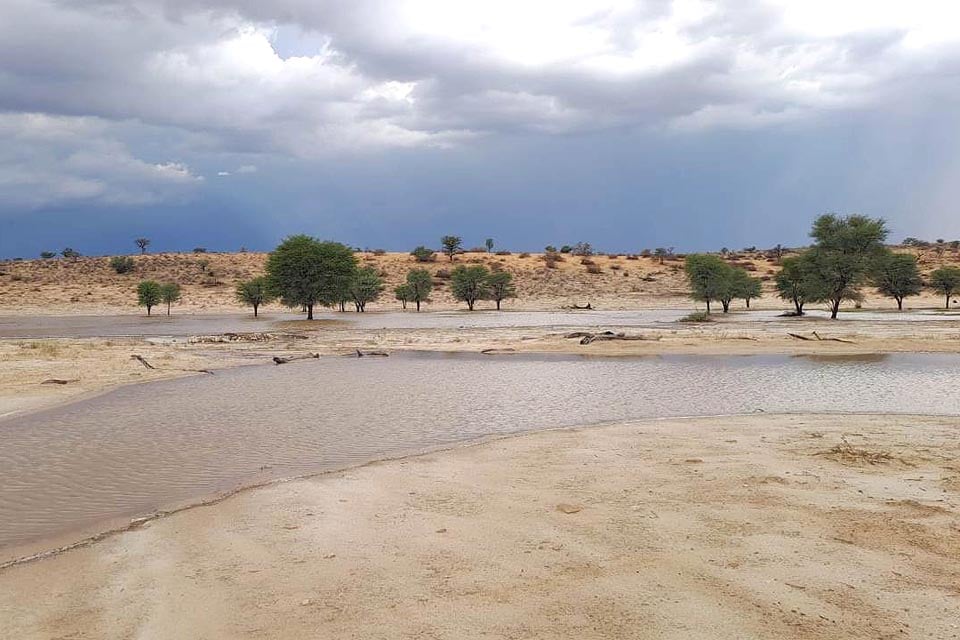Less than a metre from the bottom of dried-up Avis Dam on the outskirts of Windhoek, chirping little red and black balls of fluff seem to hover above the fresh greenery.
Every so often they settle down on the taller stalks, just to fly up again after a short while. The colourful display is staged by numerous Red Bishop males which started to breed after the first rain and the subsequent appearance of long grasses and other plants. The forehead, face and throat of a breeding male are black. The head, neck, upper chest and rump are a bright red or orange red, while the back is orange and the wings are grey-brown.
The plumage of the females is a rather inconspicuous brownish grey with a yellowish eyebrow stripe. Courting males are competing for the females’ favour by building a ball-shaped pensile nest in the dense vegetation. In contrast to other weaverbird nests, the opening is not at the bottom but close to the top on the side. A female is supposed to move into the nest of intricately woven grass to start breeding. One of them does if she likes a nest. But if no female is ready to mate, the male has to tear down the nest and build a new one.
When flying over their territory and during courtship displays the males ruffle their feathers to show off their extended neck and colourful back feathers. The puffed-up splendour is also intended to impress rivals and keep them in check. Apart from their magnificent feathers, males use a chirping song to attract females. The Red Bishop is polygynous and will mate with three to eight females.
The female lays a clutch of one to five turquoise-coloured eggs. She takes care of them by herself and also of the chicks when they hatch after twelve to thirteen days. They are fully fledged within two weeks.
Red Bishops occur in the central parts of Namibia from north to south, as well as in the furthest northern regions and in the west right to Swakopmund on the coast. After moulting, males and females look the same in winter. Red Bishops eat mainly seeds, but also insects such as caterpillars and flying termites.
Dirk Heinrich




.png?width=82&height=85&name=Navigate%20Namibia-03%20(1).png)
SUBMIT YOUR COMMENT